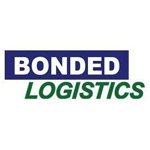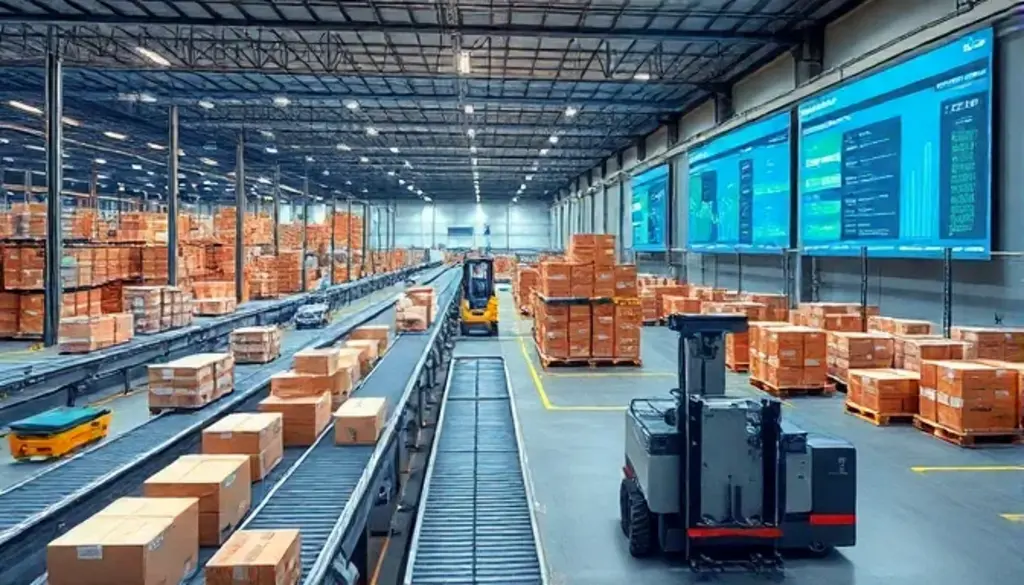Warehouse Inventory Replenishment: Methods & Best Practices
In warehouse management, replenishment isn’t just about refilling shelves—it’s about ensuring the right inventory is available at the right time to meet demand while avoiding excess stock that ties up capital. An inefficient replenishment process leads to stockouts, delays, wasted labor, and financial losses, while a well-optimized strategy improves order fulfillment, reduces costs, and enhances customer satisfaction.
Effective replenishment requires data-driven decision-making, real-time monitoring, and strategic execution. It involves balancing inventory turnover, demand forecasting, and supplier reliability to create an agile supply chain that adapts to fluctuations. Warehouses must consider factors such as:
- Stock movement patterns – How frequently products sell and need replenishment.
- Storage constraints – Whether space limitations require frequent replenishment cycles.
- Supply chain reliability – Lead times and consistency of vendors.
- Operational efficiency – Minimizing labor costs while maximizing inventory availability.
This guide will provide a comprehensive look at warehouse replenishment, covering:
- Core replenishment methods and how to select the best approach for your warehouse.
- Best practices for improving replenishment accuracy and efficiency using technology and process optimization.
- How to handle emergency replenishment in response to demand surges or supplier delays.
- Continuous improvement strategies for refining replenishment processes over time.
By leveraging automation, analytics, and strategic replenishment techniques, warehouses can maintain optimal stock levels, minimize risks, and enhance operational performance.
What is Warehouse Replenishment?
Warehouse replenishment is the process of strategically restocking inventory to maintain optimal stock levels for order fulfillment. It ensures that high-demand items remain available while preventing excess stock that increases storage costs. Unlike traditional inventory management, which focuses on tracking stock levels, replenishment is about actively managing the movement of goods to meet demand efficiently.
At its core, replenishment involves two key movements:
- Internal stock transfers – Moving inventory from bulk storage to picking locations to ensure products are available for order fulfillment.
- Supplier-driven replenishment – Restocking warehouse inventory by reordering from vendors before reaching critical stock levels.
An effective replenishment strategy aligns inventory levels with real-time demand, supplier lead times, and warehouse space constraints, ensuring seamless order processing without overstocking or stockouts.
Why is Replenishment Critical for Warehouse Operations?
Without a structured replenishment process, warehouses face severe operational inefficiencies that impact order fulfillment, labor productivity, and financial performance:
- Stockouts and Lost Sales – Running out of essential products disrupts customer orders and damages relationships, forcing businesses to scramble for emergency replenishment.
- Excess Inventory & Carrying Costs – Overstocked items tie up working capital and consume valuable warehouse space, increasing storage and insurance expenses.
- Labor Inefficiencies – Poor replenishment planning results in workers constantly backtracking to restock shelves, slowing down picking operations and leading to wasted effort.
- Supply Chain Disruptions – Inconsistent replenishment processes make it difficult to adapt to supplier delays, fluctuating demand, and unexpected market shifts.
By implementing data-driven replenishment strategies, warehouses can:
- Increase inventory turnover, ensuring stock moves efficiently without stagnation.
- Minimize stock imbalances, keeping just enough inventory to fulfill orders while avoiding excess.
- Improve order accuracy and speed, reducing delays and labor-intensive restocking efforts.
- Enhance operational efficiency, ensuring warehouse teams work in a streamlined, coordinated manner.
How Warehouse Replenishment Works

The replenishment process follows a structured cycle that integrates inventory monitoring, automated triggers, and real-time adjustments:
- Monitoring Inventory Levels – Warehouse Management Systems (WMS), RFID scanners, or manual tracking methods detect when stock reaches reorder thresholds.
- Triggering Replenishment – Based on demand forecasts, supplier lead times, and stock levels, inventory is either:
- Pulled from bulk storage and restocked into picking zones.
- Reordered from suppliers before depletion.
- Stock Allocation & Movement – Once replenished, items are strategically placed for efficient order picking and retrieval.
- Ongoing Performance Monitoring – KPIs such as inventory turnover, replenishment accuracy, and fulfillment speed help refine strategies over time.
Key Factors Influencing Replenishment Decisions
Replenishment strategies are not one-size-fits-all; they must be tailored to operational needs and market conditions. The following factors play a crucial role in determining the frequency, volume, and execution of replenishment cycles:
- Demand Variability – Warehouses with seasonal demand fluctuations or fast-moving goods require more dynamic replenishment cycles than those with predictable sales.
- Supplier Lead Times – Long lead times necessitate proactive restocking, while unreliable suppliers require backup sourcing or increased safety stock.
- Storage Space & Capacity – Warehouses with limited space must prioritize frequent, smaller replenishments, while larger facilities can accommodate bulk restocking.
- Order Frequency & Volume – E-commerce fulfillment centers processing thousands of daily orders require continuous replenishment, while B2B distributors may operate on scheduled restocking cycles.
- Cost Considerations – Businesses must balance inventory carrying costs with replenishment frequency, ensuring stock is maintained without excessive storage expenses.
Why Proactive Replenishment is Essential
Instead of treating replenishment as a reactive process, leading warehouses use proactive replenishment strategies that integrate automation, demand forecasting, and real-time data analysis. This approach helps:
- Reduce last-minute rush orders, which often come with higher procurement costs and fulfillment delays.
- Enhance supply chain visibility, ensuring replenishment aligns with sales trends and supplier capabilities.
- Minimize operational bottlenecks, preventing stock shortages that disrupt warehouse workflows.
By adopting a structured and technology-driven replenishment strategy, warehouses can ensure smooth operations, improved efficiency, and better inventory control.
Key Replenishment Methods
Selecting the right replenishment method is essential for maintaining inventory flow, minimizing costs, and ensuring efficient order fulfillment. Each method has distinct advantages, making it critical for warehouses to choose an approach that aligns with demand variability, supplier reliability, and storage constraints.
Below, we explore the four primary replenishment methods, how they work, and when they are most effective.
1. Min/Max Replenishment
The minimum/maximum (Min/Max) replenishment model is one of the most widely used methods, relying on preset stock levels to trigger replenishment. When inventory falls below the minimum threshold (reorder point), a restocking order is generated to refill stock up to the maximum level.
This approach simplifies inventory management by providing clear restocking triggers while maintaining a buffer against demand fluctuations.
When to Use Min/Max Replenishment
- Predictable Demand – Works best for high-turnover products with stable sales patterns.
Space-Constrained Warehouses – Limits excessive stock buildup by capping inventory at a predefined maximum. - Automated Inventory Control – When integrated with a Warehouse Management System (WMS), replenishment can be automated to reduce manual intervention.
Challenges of Min/Max Replenishment
- Struggles with demand volatility – Sudden demand spikes may deplete stock faster than expected, leading to stockouts.
- Requires regular adjustments – Min/max thresholds must be continuously reviewed to remain relevant as demand shifts.
2. Demand-Driven Replenishment
Unlike Min/Max replenishment, which relies on preset thresholds, demand-driven replenishment dynamically adjusts restocking based on real-time sales and consumption patterns. Instead of waiting for stock levels to reach a predefined point, inventory is replenished in alignment with actual demand trends.
Advanced forecasting models analyze historical sales data, seasonality, and external factors to predict future demand and optimize replenishment timing.
When to Use Demand-Driven Replenishment
- Highly Fluctuating Demand – Ideal for e-commerce, seasonal products, and fast-moving consumer goods (FMCG).
- Just-in-Time (JIT) Operations – Reduces excess stock and minimizes storage costs by restocking only when necessary.
- Multi-Channel Fulfillment Centers – Ensures consistent replenishment across retail, wholesale, and online sales platforms.
Challenges of Demand-Driven Replenishment
- Requires accurate forecasting – Without strong analytics, replenishment errors can lead to delays or excess stock.
- More technology-intensive – Businesses must invest in predictive analytics and automated inventory tracking.

3. Periodic Replenishment
Periodic replenishment operates on a fixed schedule, with restocking occurring at predetermined intervals (daily, weekly, monthly). Rather than reacting to inventory levels, replenishment occurs regardless of stock depletion rates.
While simpler to manage, this method can lead to inefficiencies if replenishment cycles don’t align with actual demand fluctuations.
When to Use Periodic Replenishment
- Stable Supplier Schedules – Best for businesses with predictable order volumes and reliable vendor lead times.
- Bulk Purchasing Discounts – Warehouses that benefit from economies of scale when placing larger restocking orders.
- Non-Perishable Goods – Effective for industries where products don’t expire quickly, such as manufacturing components.
Challenges of Periodic Replenishment
- Less responsive to demand spikes – If sales suddenly surge, inventory may run out before the next scheduled replenishment.
- Can lead to overstocking – Fixed replenishment cycles may result in excess inventory accumulation, increasing storage costs.
4. Event-Triggered Replenishment
Unlike time-based replenishment, event-driven replenishment is activated by specific triggers in warehouse operations, such as:
- A large customer order depleting stock unexpectedly.
- A sudden sales surge requiring emergency restocking.
- Supply chain delays signaling a need for early replenishment.
This method ensures rapid response to unexpected changes, making it a critical component of adaptive warehouse management.
When to Use Event-Triggered Replenishment
- Unpredictable Demand Scenarios – Works well for low-volume, high-value items where demand patterns are inconsistent.
- Supply Chain Uncertainty – Helps mitigate risks when supplier reliability fluctuates.
- Just-in-Time (JIT) Warehousing – Ensures critical inventory is replenished immediately when triggered by operational needs.
Challenges of Event-Triggered Replenishment
- Resource-intensive – Requires real-time monitoring systems to detect changes and immediate response capabilities.
- Potential supply chain strain – If suppliers can’t rapidly fulfill unexpected orders, replenishment can become unreliable.
Choosing the Right Replenishment Strategy
The best replenishment method depends on multiple factors, including:
- Demand patterns – Are sales stable or highly variable?
- Supplier reliability – Do vendors have long or inconsistent lead times?
- Warehouse capacity – Can your facility accommodate bulk stock replenishment or does it require frequent restocks?
- Operational complexity – Does your business need simple automation or advanced demand forecasting?
Blending Multiple Methods for Maximum Efficiency
Most warehouses don’t rely on just one replenishment strategy. Instead, they use a hybrid approach to optimize inventory control:
- Min/Max replenishment for predictable, high-volume SKUs.
- Demand-driven replenishment for seasonal or fast-moving products.
- Event-triggered replenishment for critical inventory needs.
By implementing a flexible replenishment strategy, warehouses can achieve faster order fulfillment, lower storage costs, and improved stock availability.
Best Practices for Warehouse Replenishment

A well-optimized replenishment strategy goes beyond simply restocking inventory—it requires proactive planning, data-driven decision-making, and continuous process refinement. By implementing best practices, warehouses can reduce operational costs, minimize stock imbalances, and enhance order fulfillment accuracy.
The following best practices focus on demand forecasting, automation, warehouse layout optimization, and performance tracking to ensure an efficient and responsive replenishment process.
1. Accurate Demand Forecasting: The Foundation of Effective Replenishment
Forecasting errors can derail even the most well-planned replenishment strategies. Underestimating demand leads to stockouts and fulfillment delays, while overestimating results in excess inventory that ties up capital and warehouse space.
Instead of relying on historical data alone, modern warehouses will soon use AI-driven analytics to predict demand fluctuations with greater accuracy.
How to Improve Demand Forecasting
- Analyze historical sales trends to identify patterns and seasonal demand shifts.
- Incorporate external factors such as promotions, weather conditions, and economic indicators.
- As technology evolves, leverage AI and machine learning to dynamically adjust forecasts based on real-time purchasing behavior.
- Implement demand segmentation, distinguishing between high-volume, seasonal, and slow-moving SKUs for customized replenishment rules.
2. Leveraging Automation and Technology to Improve Efficiency
Manual replenishment processes are time-consuming and prone to errors. By integrating automation and real-time tracking, warehouses can eliminate inefficiencies and ensure accurate, timely restocking.
Technology Solutions for Warehouse Replenishment
- Warehouse Management Systems (WMS): Automates replenishment by triggering restocks when inventory falls below predefined levels.
- RFID & Barcode Scanning: Provides real-time inventory tracking, reducing stock discrepancies.
- Automated Mobile Robots (AMRs): Assist in moving inventory to picking areas, minimizing manual restocking tasks.
- IoT-Based Inventory Sensors: Monitor stock levels and trigger automatic replenishment requests when supplies run low.
3. Strategic Warehouse Layout and Space Utilization
Inefficient warehouse layouts increase replenishment times, create congestion, and lead to unnecessary labor costs. By optimizing space and organizing inventory strategically, warehouses can reduce travel time for replenishment and improve picking efficiency.
How to Optimize Warehouse Layout for Replenishment Efficiency
- Store high-demand SKUs closer to picking areas to reduce travel distance for restocking.
- Utilize vertical storage solutions to maximize warehouse space.
- Implement dynamic slotting, adjusting storage locations based on seasonal demand or product velocity.
- Designate separate replenishment zones to minimize interference with picking operations.
4. Establishing Key Performance Indicators (KPIs) for Replenishment Success
Without measurable KPIs, warehouses lack visibility into whether their replenishment strategies are effective or creating inefficiencies. Tracking performance metrics helps identify bottlenecks and opportunities for improvement.
Essential Replenishment KPIs to Monitor
- Stockout Rate (%) – Measures how often products are unavailable when needed.
- Inventory Turnover Ratio – Evaluates how quickly inventory cycles through replenishment.
- Replenishment Accuracy Rate – Tracks discrepancies between planned vs. actual replenishment.
- Supplier Lead Time Variability – Measures consistency in vendor deliveries to avoid replenishment delays.
- Replenishment Cycle Time – Assesses the time it takes to restock inventory from the moment a trigger is activated.
5. Workforce Training & Process Standardization
Even with advanced replenishment technologies, human oversight and operational expertise remain critical. A well-trained workforce ensures that replenishment processes are executed consistently and efficiently.
How to Standardize and Train for Better Replenishment Execution
- Develop standardized replenishment procedures to ensure consistency across teams.
- Train warehouse staff on WMS, RFID scanners, and automated replenishment tools.
- Encourage cross-training, enabling flexibility in warehouse roles to handle fluctuating workloads.
- Conduct periodic audits and performance evaluations to identify skill gaps and refine workflows.
6. Continuous Improvement and Data-Driven Optimization
Replenishment strategies must be continuously refined to keep pace with changing demand patterns, supplier performance, and warehouse conditions. Data-driven optimization ensures that replenishment remains efficient, cost-effective, and aligned with operational goals.
How to Continuously Improve Replenishment Performance
- Regularly review and adjust replenishment thresholds based on historical performance trends.
- Leverage advances in AI to predict and respond to fluctuations in demand more accurately.
- Monitor supplier performance and adjust ordering schedules accordingly.
- Test and implement process improvements through small-scale pilots before making large changes.
Final Thoughts on Warehouse Replenishment Best Practices
By implementing accurate forecasting, automation, strategic warehouse layouts, and ongoing performance tracking, businesses can ensure an efficient and resilient replenishment process. A data-driven approach allows warehouses to:
- Anticipate demand fluctuations, reducing stockouts and overstocking.
- Leverage automation for efficiency, minimizing manual intervention.
- Optimize space utilization, streamlining replenishment workflows.
- Monitor key performance metrics, continuously improving warehouse operations.
Warehouses that prioritize proactive replenishment strategies will not only enhance efficiency and cost savings but also improve customer satisfaction and supply chain resilience.
Managing Inventory for Optimal Replenishment

Effective replenishment hinges on accurate inventory management, strong vendor relationships, and proactive planning. Without a structured approach, warehouses risk stock imbalances, fulfillment delays, and increased carrying costs. To optimize replenishment, businesses must focus on inventory accuracy, buffer stock strategies, supplier reliability, and data-driven decision-making.
This section explores key techniques to maintain ideal inventory levels, reduce waste, and ensure seamless stock replenishment.
Inventory Audits & Accuracy: Preventing Stock Discrepancies
Replenishment plans are only as reliable as the inventory data they rely on. Stock discrepancies can lead to:
- Inaccurate restocking triggers, causing stockouts or excess inventory.
- Disruptions in order fulfillment, delaying shipments and increasing operational costs.
- Unnecessary emergency orders, inflating procurement and logistics expenses.
How to Maintain Inventory Accuracy
- Cycle counting: Instead of performing full warehouse audits, implement daily or weekly cycle counts for high-demand SKUs.
- Real-time inventory tracking: Use RFID, barcode scanning, and WMS automation to ensure up-to-date stock visibility.
- Data reconciliation: Compare past replenishment orders with actual sales to detect discrepancies early.
- Standardized audit procedures: Train staff on consistent inventory verification techniques to ensure data reliability.
Safety Stock Calculation & Buffer Planning
Even with precise forecasting, unexpected events—such as supplier delays, demand surges, or shipment disruptions—can lead to stockouts. Safety stock serves as a buffer to prevent shortages and ensure replenishment cycles remain uninterrupted.
How to Calculate Safety Stock
The most common formula for determining safety stock is:
Safety Stock = Z × σd × √LT
Where:
- Z = Desired service level factor (higher for critical SKUs).
- σ_d = Standard deviation of demand.
- LT = Lead time variability (in days).
Best Practices for Safety Stock Optimization
Segment inventory by priority: Apply higher safety stock levels to critical SKUs and lower buffers to slow-moving items.
Adjust for seasonal fluctuations: Increase safety stock for seasonal products to avoid shortages during peak periods.
Monitor supplier reliability: Unstable lead times require higher buffer stock to compensate for potential delays.
Optimize safety stock levels quarterly: Regularly refine safety stock calculations to prevent unnecessary capital investment in excess inventory.
Vendor Management & Supplier Reliability
Reliable suppliers are critical to replenishment efficiency. Late shipments, inaccurate orders, or poor communication with vendors can disrupt stock availability and fulfillment timelines.
How to Optimize Vendor Performance for Replenishment
Track Key Vendor Metrics:
- On-time delivery rate – Measures how often suppliers meet promised delivery dates.
- Order accuracy – Tracks discrepancies between ordered vs. received quantities.
- Lead time consistency – Evaluates whether actual lead times match supplier estimates.
- Emergency response efficiency – Determines supplier flexibility in handling urgent replenishment requests.
Best Practices for Vendor Management:
- Use vendor scorecards: Rank suppliers based on performance, reliability, and lead time consistency.
- Maintain secondary suppliers: Avoid over-reliance on one vendor by securing alternative sourcing options.
- Implement vendor-managed inventory (VMI): Enable suppliers to monitor stock levels and auto-replenish inventory, reducing manual restocking efforts.
- Negotiate flexible contracts: Secure supplier agreements that allow for adjustments in order volumes to match demand fluctuations.
Replenishment Optimization Through Data-Driven Decisions
Many replenishment challenges arise from reactive decision-making instead of proactive planning. By leveraging data-driven insights, warehouses can fine-tune replenishment cycles and eliminate inefficiencies.
How to Optimize Replenishment with Data
- Use advanced demand forecasting: Predict future inventory needs based on historical trends and real-time fluctuations.
- Apply ABC inventory analysis: Prioritize high-value (A) and high-demand (B) SKUs for more frequent replenishment, while managing low-priority (C) SKUs with periodic restocking.
- Monitor stock movement heatmaps: Identify warehouse inefficiencies and adjust replenishment zones accordingly.
- Integrate real-time sales data with WMS: Ensure replenishment triggers align with actual customer demand trends rather than fixed schedules.
Emergency Replenishment Planning: Handling Supply Chain Disruptions
Unexpected supply chain disruptions, weather events, or supplier failures can cause major replenishment challenges. A strong contingency plan ensures that warehouses can respond quickly to shortages without disrupting operations.
How to Build an Effective Emergency Replenishment Plan
- Identify critical SKUs: Focus contingency planning on high-priority, fast-moving products that require immediate replenishment.
- Maintain an emergency supplier network: Establish relationships with backup vendors to prevent reliance on a single supplier.
- Use predictive alerts: Advanced stock monitoring tools can flag potential stock shortages before they become critical.
- Pre-negotiate expedited shipping contracts: Secure agreements with logistics providers for fast-tracked replenishment shipments when needed.
Final Thoughts on Inventory Optimization for Replenishment
Optimizing inventory for replenishment requires a combination of strategic planning, technology integration, and proactive vendor management. By focusing on inventory accuracy, predictive forecasting, supplier reliability, and emergency preparedness, warehouses can:
- Minimize stock discrepancies, ensuring replenishment decisions are based on accurate data.
- Optimize safety stock levels, balancing demand fluctuations while avoiding excess storage costs.
- Leverage vendor relationships to improve supplier performance and replenishment consistency.
- Utilize future AI and predictive analytics technologies to proactively refine replenishment schedules.
- Prepare for unexpected disruptions, ensuring emergency replenishment plans are in place.
By applying these best practices, warehouses can reduce costs, improve operational efficiency, and create a replenishment system that adapts to market demands.
Emergency Replenishment Planning: Ensuring Inventory Resilience

Even with the most well-structured replenishment strategies, unexpected supply chain disruptions, sudden demand surges, or miscalculations can create critical stock shortages. Without a plan for emergency replenishment, warehouses risk delayed order fulfillment, lost revenue, and operational chaos.
A proactive emergency replenishment strategy ensures that inventory shortages can be addressed swiftly and effectively to minimize disruptions. This section explores how warehouses can prepare for unexpected stock depletion and maintain continuity in operations.
1. Developing a Contingency Plan for Inventory Shortages
Warehouses that lack a defined emergency replenishment plan are forced into reactive decision-making, leading to:
- Rush orders at premium costs, significantly increasing procurement expenses.
- Operational bottlenecks, as teams scramble to locate alternative stock sources.
- Customer dissatisfaction, resulting from backorders and unfulfilled orders.
A structured contingency plan provides a roadmap for quick decision-making, ensuring that stock shortages do not escalate into larger supply chain failures.
Key Components of an Emergency Replenishment Plan
Predefined stock thresholds – Set automatic low-stock alerts for critical SKUs.
Alternative supplier arrangements – Maintain backup vendors for essential inventory.
Stock reallocation strategies – Enable inter-warehouse transfers to shift inventory where needed.
Expedited order processing protocols – Pre-negotiate rush order agreements with suppliers.
Inventory visibility tools – Use real-time tracking software to identify stock shortages before they become critical.
2. Identifying & Prioritizing Critical SKUs
Not all inventory requires emergency replenishment. Prioritizing critical SKUs ensures that replenishment efforts focus on high-impact items, preventing wasteful rush orders on non-essential stock.
How to Identify Critical SKUs
- High-demand, high-margin products – SKUs that directly impact revenue and order fulfillment.
- Regulated or compliance-required items – Pharmaceuticals, food products, or hazardous materials that require uninterrupted availability.
- Long lead-time components – Items that cannot be restocked quickly but are essential for warehouse operations.
- Essential production or fulfillment materials – Any stock that, if unavailable, halts downstream processes.
Best Practices for Managing Critical SKUs
- Apply ABC analysis: Category A items (high-value, high-velocity) should have higher replenishment priority than Category C (low-value, slow-moving).
- Monitor vendor reliability: If a supplier has inconsistent lead times, higher safety stock levels may be necessary.
- Use advanced demand forecasting: Predict demand spikes for priority replenishment of fast-moving inventory.
- Pre-stock emergency reserves: Warehouses should store buffer stock for SKUs critical to business continuity.
3. Strengthening Vendor Relationships for Emergency Orders
A supplier’s ability to rapidly respond to urgent restocking requests can make or break an emergency replenishment plan. Poor vendor responsiveness leads to delays, fulfillment failures, and increased operational risks.
How to Optimize Supplier Performance for Emergency Replenishment
Track Key Vendor Metrics:
- On-time fulfillment rate – Measures how quickly suppliers process emergency orders.
- Order accuracy for expedited shipments – Ensures rushed orders are not compromised by errors.
- Supplier flexibility – Assesses whether vendors can accommodate last-minute order modifications.
Best Practices for Emergency Supplier Management:
- Negotiate priority replenishment agreements: Ensure that high-performance suppliers can fulfill emergency orders ahead of standard orders.
- Develop a multi-supplier network: Avoid reliance on a single vendor for critical inventory.
- Implement vendor performance scorecards: Track supplier response times and reliability in emergency scenarios.
- Automate supplier communication: Use real-time procurement platforms to accelerate restocking requests.
4. Enabling Fast-Track Replenishment with Technology
Manual replenishment requests waste time, increasing the risk of operational delays and lost revenue. By leveraging automation and predictive analytics, warehouses can reduce the time between identifying a stock shortage and initiating replenishment.
Technology Tools for Emergency Replenishment
- Advanced demand forecasting – Identifies potential stock shortages before they happen, allowing proactive replenishment planning.
- WMS-integrated auto-replenishment triggers – Automatically places orders with vendors when stock hits critical levels.
- RFID & real-time tracking – Provides up-to-the-minute visibility into inventory movement and availability.
- Automated supplier communication tools – Sends real-time purchase orders and replenishment requests without manual intervention.
5. Emergency Inventory Redistribution: Internal Stock Reallocation
When external replenishment sources are delayed, warehouses must look inward for solutions. Inter-warehouse stock transfers and reallocation strategies help minimize the impact of supply chain disruptions.
How to Implement Emergency Stock Reallocation
- Enable multi-location inventory visibility: Centralized WMS dashboards allow real-time stock balancing across multiple facilities.
- Prioritize high-priority regions/customers: Direct available inventory toward key clients or high-impact orders.
- Develop rapid stock transfer protocols: Establish pre-approved inter-warehouse shipping plans to move inventory quickly.
- Automate internal transfer requests: Reduce approval bottlenecks for emergency stock redistribution.
Continuous Improvement & Performance Monitoring

Warehouse replenishment is not a one-time optimization task—it requires ongoing adjustments and refinements to ensure maximum efficiency, cost savings, and service reliability. Even well-established replenishment processes can become outdated as demand patterns, supplier relationships, and warehouse operations evolve.
By tracking key performance indicators (KPIs), leveraging data-driven decision-making, and continuously refining replenishment strategies, warehouses can stay ahead of demand fluctuations, reduce waste, and improve overall supply chain performance.
1. Tracking & Analyzing Replenishment Performance
Without performance tracking, warehouses operate blindly, making replenishment decisions based on assumptions rather than data. Monitoring real-time KPIs ensures replenishment remains aligned with business goals while identifying opportunities for improvement.
Essential KPIs for Warehouse Replenishment Optimization
- Stockout Rate (%) – Measures how often replenishment fails to meet demand, leading to out-of-stock situations.
- Inventory Turnover Ratio – Tracks how efficiently inventory cycles through replenishment (higher turnover = leaner inventory management).
- Replenishment Accuracy Rate – Assesses discrepancies between planned vs. actual replenishment quantities.
- Supplier Lead Time Consistency – Evaluates vendor reliability in meeting promised replenishment schedules.
- Replenishment Cycle Time – Measures the time from stock depletion to full replenishment, ensuring minimal workflow disruptions.
Best Practices for Replenishment Performance Monitoring
- Automate KPI tracking – Use WMS dashboards and analytics tools to monitor real-time performance.
- Benchmark against industry standards – Compare KPIs with industry benchmarks to identify competitive gaps.
- Identify replenishment bottlenecks – Track common delays, vendor issues, and order inaccuracies.
- Set performance-based goals – Establish thresholds for stockout rates, turnover ratios, and replenishment speeds.
2. Refining Replenishment Strategies Based on Data Insights
Static replenishment strategies fail to adapt to evolving business conditions. By using data-driven insights, warehouses can optimize replenishment cycles dynamically, reducing excess stock and improving availability.
How to Optimize Replenishment with Data
- Leverage predictive analytics – AI-based forecasting will soon be able to identify trends and demand shifts, optimizing replenishment timing.
- Adjust safety stock dynamically – Modify buffer stock based on real-time order velocity rather than fixed levels.
- Segment inventory replenishment – Use ABC analysis to fine-tune replenishment cycles for high-priority vs. slow-moving SKUs.
- Run pilot tests on new replenishment models – Before scaling changes, test them in controlled warehouse environments.
3. Workforce Training & Process Standardization
Even with automation and AI, replenishment success depends on a skilled workforce that understands best practices and process execution. Untrained staff can mismanage stock movement, override automated systems incorrectly, or introduce errors.
How to Ensure Staff Readiness for Optimal Replenishment
- Develop standardized replenishment workflows – Ensure all teams follow consistent procedures to prevent inefficiencies.
- Train employees on WMS, RFID scanners, and automated replenishment tools – Reduce human errors in inventory tracking.
- Encourage cross-training – Empower warehouse teams to handle multiple replenishment-related roles as needed.
- Perform regular audits and process evaluations – Identify areas where staff training or system adjustments are needed.
4. Implementing Automation for Long-Term Gains
Automation ensures replenishment keeps pace with growth, demand fluctuations, and evolving operational requirements. AI and real-time analytics will soon remove manual inefficiencies, creating a responsive and scalable replenishment process.
How to Automate Replenishment for Maximum Efficiency
- AI-driven forecasting systems – Continuously refine replenishment schedules based on demand trends.
- IoT sensors for inventory tracking – Provide real-time visibility into stock levels and movement.
- Automated reordering triggers – Adjust replenishment levels dynamically based on real-time stock depletion.
- Cloud-based WMS & analytics platforms – Monitor replenishment performance across multi-location warehouses.
5. Continuous Improvement through Iterative Optimization
Replenishment strategies must be continuously evaluated and improved to adapt to market shifts, warehouse expansions, and supplier changes. Businesses that fail to refine their strategies risk falling behind competitors with more agile inventory systems.
Best Practices for Continuous Replenishment Optimization
- Conduct quarterly replenishment audits – Review inventory performance and adjust stocking levels accordingly.
- Monitor SKU performance trends – Identify high-priority items needing more frequent restocking vs. low-priority items.
- Solicit feedback from warehouse teams – Operators can identify practical inefficiencies in replenishment workflows.
- Benchmark performance against competitors – Stay ahead of industry standards by adapting best-in-class replenishment techniques.
Cadre Technologies: Smarter Warehouse Replenishment
Cadre Technologies provides Warehouse Management Systems (WMS) that optimize replenishment by ensuring accurate inventory levels, reducing stockouts, and improving operational efficiency. Our solutions help warehouses streamline their replenishment strategies with:
- Real-time inventory tracking – Prevents stock discrepancies and enhances visibility.
- Automated replenishment triggers – Reduces manual intervention and ensures timely restocking.
- Advanced demand forecasting – Uses data analytics to predict inventory needs and minimize excess stock.
- Seamless supply chain integration – Improves vendor coordination and reduces lead time variability.
- Flexible replenishment strategies – Supports Min/Max, demand-driven, periodic, and event-triggered models.
With Cadre Technologies, warehouses can shift from reactive inventory management to a proactive, technology-driven replenishment approach, reducing costs and enhancing fulfillment efficiency.
Conclusion
A well-executed replenishment strategy ensures that inventory levels remain optimized, demand fluctuations are managed efficiently, and operational costs are minimized. By leveraging accurate demand forecasting, automation, strategic warehouse layouts, and continuous process improvements, businesses can maintain a seamless flow of inventory and prevent disruptions in order fulfillment.
As technology evolves, warehouse replenishment will continue to shift toward predictive analytics, AI-driven automation, and real-time decision-making. Companies that proactively refine their replenishment methods will gain a competitive edge, reducing inefficiencies while enhancing service levels.
Ready to transform your replenishment strategy? Ensure accurate inventory levels, reduce stockouts, and streamline warehouse operations with Cadre’s advanced Warehouse Management Systems. Our automated replenishment solutions help you stay ahead of demand and maximize efficiency.
Frequently Asked Questions (FAQs)
What is the primary goal of inventory replenishment?
The main goal of inventory replenishment is to maintain optimal stock levels so that customer demand is met without overstocking or stockouts. A well-planned replenishment strategy ensures continuous product availability, reduced carrying costs, and improved order fulfillment efficiency.
How does demand-driven replenishment differ from other methods?
Demand-driven replenishment aligns stock replenishment directly with real-time consumption patterns, reducing the reliance on static reorder points. Unlike periodic or min/max replenishment, this method adjusts dynamically to fluctuations in sales and demand trends, making it highly effective for fast-moving or seasonal items.
Why is accurate demand forecasting essential for warehouse replenishment?
Inaccurate forecasting can lead to stock shortages, excess inventory, and inefficient replenishment cycles. By leveraging historical sales data, and predictive analytics, warehouses can anticipate demand fluctuations and adjust replenishment schedules accordingly.
What technologies improve replenishment efficiency?
Key technologies that enhance replenishment include:
- Warehouse Management Systems (WMS): Automates replenishment triggers based on predefined rules.
- RFID & barcode scanning: Improves inventory tracking and accuracy.
- AI-powered demand forecasting: Soon, AI will predict stock needs based on market trends.
- IoT-based inventory sensors: Provides real-time visibility into stock levels.
- Automated mobile robots (AMRs): Assist in moving replenished stock efficiently.
How can strong vendor relationships improve emergency replenishment plans?
Reliable suppliers help ensure quick restocks during unexpected demand surges. By maintaining strong relationships, warehouses can negotiate faster lead times, access priority replenishment services, and reduce supply chain disruptions. A backup supplier network also helps mitigate risks from primary vendor delays.










